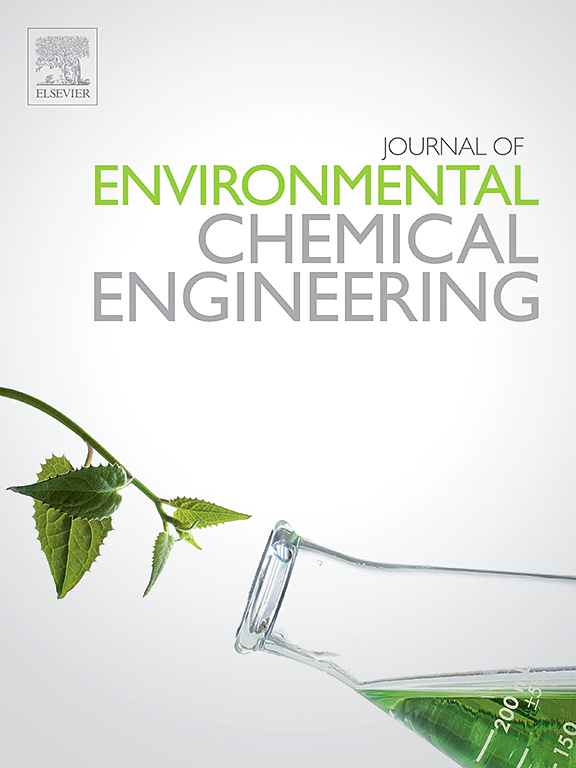洞察机器学习在非催化条件下预测生物废物水热处理中碳流的能力
IF 7.2
2区 工程技术
Q1 ENGINEERING, CHEMICAL
引用次数: 0
摘要
水热技术可以高效地将生物质废弃物转化为固相产物(水合物)、水相产物、油相产物和气相产物。这些产品的产率和特性受水热条件的影响很大,导致实验繁琐,成本高。机器学习可以根据现有数据预测新条件下目标产品的特征。本研究旨在预测生物质废弃物在非催化条件下的热液碳流。建立了非催化条件下生物废弃物热液碳流数据集,采用人工神经网络(ANN)、GPR、PSO-LS-SVM和RF 4种机器学习模型对热液产物碳流进行预测。结果表明,PSO-LS-SVM模型具有最高的预测精度和稳定性(最高R²值为>;0.99,中位数>;0.92)。最优模型(PSO-LS-SVM)的特征重要性分析表明,生物质废弃物质量和容器体积是预测烃类、水相和油相产品质量的最关键参数,其贡献显著高于其他变量,且具有正向效应。新环境数据的验证表明,该模型具有良好的预测能力,预测值与实验值之间的偏差极小。R²值主要在0.7以上,有的甚至高达0.99。该研究为生物质废弃物的水热转化提供了重要的方法支持。本文章由计算机程序翻译,如有差异,请以英文原文为准。
Insights into the capability of machine learning for predicting carbon flow in biowaste hydrothermal treatment under non-catalytic conditions
Hydrothermal technology can efficiently and highly valorize biomass waste into solid phase products (hydrochar), aqueous phase products, oil phase products, and gas phase products. The yield and characteristics of these products are significantly influenced by hydrothermal conditions, leading to cumbersome experiments and high cost inputs. Machine learning can predict the characteristics of target products under new conditions based on existing data. This study aims to predict the hydrothermal carbon flow of biomass waste under non-catalytic conditions. A hydrothermal carbon flow dataset for biowaste under non-catalytic conditions was established, and four machine learning models (ANN, GPR, PSO-LS-SVM, and RF) were used to predict the carbon flow of hydrothermal products. The results showed that the PSO-LS-SVM model has the highest prediction accuracy and stability (The highest R² value is > 0.99 with a median > 0.92). Feature importance analysis of the optimal model (PSO-LS-SVM) revealed that the biomass waste mass and vessel volume are the most critical parameters for predicting the mass of hydrochar, aqueous phase, and oil phase products, with significantly higher contributions than other variables and positive effects. Validation with new environmental data demonstrated that the model has excellent predictive capability, with minimal deviations between the predicted and experimental values. The R² values were mainly above 0.7, and some reach as high as 0.99. This study provides an important methodological support for the hydrothermal conversion of biomass waste.
求助全文
通过发布文献求助,成功后即可免费获取论文全文。
去求助
来源期刊

Journal of Environmental Chemical Engineering
Environmental Science-Pollution
CiteScore
11.40
自引率
6.50%
发文量
2017
审稿时长
27 days
期刊介绍:
The Journal of Environmental Chemical Engineering (JECE) serves as a platform for the dissemination of original and innovative research focusing on the advancement of environmentally-friendly, sustainable technologies. JECE emphasizes the transition towards a carbon-neutral circular economy and a self-sufficient bio-based economy. Topics covered include soil, water, wastewater, and air decontamination; pollution monitoring, prevention, and control; advanced analytics, sensors, impact and risk assessment methodologies in environmental chemical engineering; resource recovery (water, nutrients, materials, energy); industrial ecology; valorization of waste streams; waste management (including e-waste); climate-water-energy-food nexus; novel materials for environmental, chemical, and energy applications; sustainability and environmental safety; water digitalization, water data science, and machine learning; process integration and intensification; recent developments in green chemistry for synthesis, catalysis, and energy; and original research on contaminants of emerging concern, persistent chemicals, and priority substances, including microplastics, nanoplastics, nanomaterials, micropollutants, antimicrobial resistance genes, and emerging pathogens (viruses, bacteria, parasites) of environmental significance.
 求助内容:
求助内容: 应助结果提醒方式:
应助结果提醒方式:


